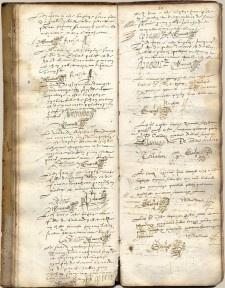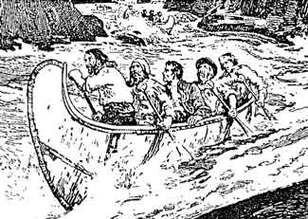Category Archives: Grade 9
Archimedes project
https://youtu.be/Y7o0uHmzvXo
circle geometry
https://play.kahoot.it/#/?quizId=ab165a8f-5760-44d2-8a53-bb3cd066ef3f
Taming of the Shrew Stop Motion Induction Scene Project
Taming of the Shrew Stop Motion Induction Scene
During the stop motion production of “Taming of the Shrew” induction scene written by William Shakespeare, Andrew, Nick, and Gabriel all contributed in different ways, Gabe was the IPad master and worked with the apps and taking the pictures, while Nick was a co Lego master and worked on some paper work, Andrew was also a co Lego master and worked together with Nick on the worksheet. The inset is the actual play, while the induction acts like introduction to the play, but doesn’t necessarily have to have a relation to the inset. It applies to our project because we are doing the induction scene and have to build up to the inset to make it flow. We used an app called stop motion which helped a lot with the process of making the film some of the nice features were paid but they were not necessary. We applied stop motion to the induction by using Lego figures and our computer to create a background
We could capture it differently on stage in a more simple and easy to understand way and we had a lot of fun getting a greater knowledge of the play as well as creating our own image of it. Some challenges we occurred was not doing the explaining of the induction and inset at the beginning because we did it and the end and were unable to copy and paste it to the start. What we learned during this project was a greater understanding of the induction to the play “Taming of The Shrew” as well as learning how to use new apps like stop motion and text to speech. Which is two apps that we could use in the future.
Animal Farm Propaganda Poster
Included in the poster “4 legs good, 2 Legs bad”, one would recognize the propaganda techniques such as repetition, fear, glittering generalities, and scapegoat. The Propaganda technique repetition is used by the person in power to influence the beliefs of the ones around them. Found in the poster, “4 legs good, 2 Legs bad” is the slogan that gets repeated by the animals living on animal farm to keep the belief going that man ruins their lives. The propaganda tactic fear is used to scare members telling them that bad things will happen if one does not follow the plan. The image of the farmer Mr. Jones can be found within the poster bringing fear into the animals’ minds, reminding them of the terrible life Mr. Jones gave them. Glittering generalities is a technique using vague words usually in a catchphrase or slogan that cannot be proven true or false. The phrase “4 legs good, 2 Legs bad” found in the poster is an example of a glittering generality because that statement cannot be proven true or false and the wording is very general. The Propaganda technique scapegoat is used to simplify a complex situation by presenting one group or person as the enemy. The poster is presenting scapegoat because it represents mankind as the enemy. One would recognize that the propaganda techniques repetition, fear, glittering generalities, and scapegoat are represented in the poster about mankind ruining the animals’ lives.
“The Secluded Lot” – Graphic Novel
“The Secluded Lot” – Plot Points
1 (exposition) “I’d like to inquire a lot,” the old man said, the effort of decision was evident in his voice.” (115)
2 (rising action) “I’d prefer a location where trees and shrubs have had a chance to grow.” (115)
3 (rising action) “I don’t want perpetual care.” The old gentleman was indignant. (117)
4 (rising action) “Please sign here.” Mr. Jerome pushed the document towards him. The old man signed with a shaky hand. (118)
5 (climax) “How dare you operate a beehive in the cemetery?” (119)
6 (falling action) “It’s on my property. I purchased it, did I not?” (119)
7 (falling action) “Mr. Jerome, I have done you a great service. Your flowers have never been so magnificent and plentiful.” (120)
8 (resolutions) “Mr. Jerome, I have reached an important decision: I should like to buy another lot.” (121)
New France Document Gallery
links are embedded in the pictures – click the picture to go to the source
Champlain and Quebec 4

this painting by C. W. Jefferys shows Champlain leading a procession to the table at Port-Royal – crossroads pg 20
Jesuits and Huron 3
Royal Government 3

Louis de Buade, Comte de Frontenac was the governor general of New France from 1672-1682 and 1689-1698.

Jean Talon, Bishop François de Laval and several settlers welcome the King’s Daughters upon their arrival.
Coureurs de Bois 1
Seigneury 3

Habitants often had time to enjoy their surroundings. This painting by James peachy is called A View of the Bridge over the Berthier River. crossroads pg 34

Seigneury family dinner.
French vs English – Fur Trade and Fishing 2
Seven Years War 3

The Death of General Wolfe, painted in 1763 by Edward Penny, a British artist. A surgeon, Thomas Wilkins, tends the stricken general, who is supported by Volunteer James Henderson and watched by Lieutenant Hennery Brown. – crossroads pg 67

Proclamation of War A copy of the declaration of war that in 1744 finally shattered the period of peace that followed the Treaty of Utrecht in 1713

















